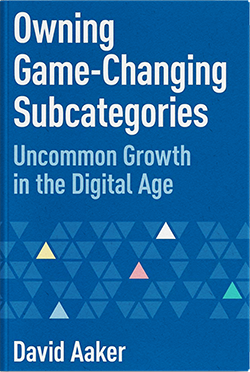BLOG
Winning in the Post-COVID-19 World: Trends Here to Stay
Employees yearn for more meaning at work and customers are looking for brands they can respect and admire.
In the talk themed “Winning in the Post-COVID-19 World,” I reflected on what changes prompted by COVID-19 are likely to persist and what strategies and programs winning organizations are likely to employ, drawing from the books Aaker on Branding, Creating Signature Stories and Owning Game-Changing Subcategories.
There have been a host of changes in human attitudes and behaviors that have been stimulated or more frequently accelerated by COVID-19. Many of these will persist, some at a high level, and will affect the strategy options for many industries.
Here are the changes that are here to stay beyond 2020.
1. Search for meaning in life and work.
The virus has prompted many to reevaluate their life and work and assess what is really important. The result is often a realization that their hopes and time allocation need to change to elevate what is truly meaningful and rewarding to them.
One implication is that it is more important than ever for organizations to have a higher purpose that engenders inspiration among both employees looking for meaning at work and customers looking for brands they can respect and admire. A higher purpose can be offer-driven (we make insanely great products), culture-driven (our students and faculty have confidence without attitude) or social/environmentally driven (Avon walk for breast cancer; Unilever’s Sustainable Living Plan)
2. Need for social connections.
The shelter-in-place world made even more vivid what is universally known and true, that for most people, social interaction and connection is a valued and, indeed, a necessary part of human existence.
“It is more important than ever for organizations to have a higher purpose that engenders inspiration among both employees looking for meaning at work and customers looking for brands they can respect and admire.”
That means that brand communities will be even more valuable to both people and brands. A brand community is a group of people that share involvement in an activity, issue or interest area with a brand as a focal point. Examples are the Harley-Davidsons HOGS (motorcycles and rides), Etsy craft makers (how to make and market crafts), Sephora Beauty Insider (talk, be inspired and get advice about beauty). They all provide opportunities to interact, connect and belong to a group in addition to providing the brand with a strong link to a committed customer base
3. Valuing trust and authenticity
The importance of earning trust in brands and institutions, which has been eroding for well over a decade, was reaffirmed in the days of the pandemic and surrounding events. In this context, being able to communicate in an authentic, trustworthy way becomes critical. That means that stories must play a more important role because facts by themselves are not effective communication vehicles and often do not suggest trust or authenticity.
Stories, particular signature stories that “Wow!” and communicate a strategic message, are more able to communicate values and programs that engender trust and authenticity. When well selected and presented, they will attract attention, change perceptions, distract from counter-arguing, affect behavior and be authentically remembered.
4. Acceleration of change
There were a host of changes that were underway before COVID-19, like working from home, the use of remote conferencing, concern about health and safety, the rise of e-commerce and the power of social media. But all these trends and more have accelerated as has the level of market dynamics. It is increasingly problematic to assume that future business will look the same as the past and that a “my brand is better than your brand” marketing strategy will work.
Strategically, there needs to be a realization that the best path to growth is now owning new subcategories that change the customer experience or brand relationship. The first task is to find or create a compelling set of “must-haves” that are valued by a core customer group. The second is to become the new subcategory exemplar brand that positions, scales and builds barriers.
On May 22, 2020, David Aaker shared these insights with a live audience of 180,000 in India at the MastersSpeak series sponsored by Future Generali, a major India Life Insures Company. To learn more about creating subcategories that drive uncommon growth at a time of disruption, pick up a copy of his new book, Owning Game-Changing Subcategories: Uncommon Growth in the Digital Age. It is available wherever books are sold.
FINAL THOUGHTS
As the world moves through the pandemic, marketers must stay alert to the zeitgeist. Many of these changes–especially the need for human connection,, the search for meaning and comfort with the ramped-up pace of change–will be with us for some time. Brands should respond accordingly.


